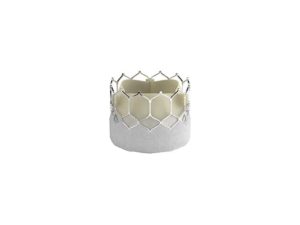
Results from two large, real-world studies assessing outcomes for patients undergoing transcatheter aortic valve implantation (TAVI) with the Sapien (Edwards Lifesciences) valve platform have been presented at the 2024 Cardiovascular Research Technologies (CRT) meeting (9–12 March, Washington, DC, USA).
The first assessed outcomes with the latest-generation, Sapien 3 Ultra Resilia valve, reporting lower rates of paravalvular leak (PVL) at 30 days, lower echo-derived gradients and larger effective orifice areas across all valve sizes when compared to the Sapien 3 and Sapien 3 Ultra valves. These data were presented yesterday during a podium presentation and simultaneously published in the Journal of the American College of Cardiology (JACC): Cardiovascular Interventions.
In a second study presented during the late-breaking clinical trials session, small Edwards Sapien TAVI valves demonstrated equally excellent outcomes at three years as compared to larger Sapien TAVI valve sizes.
“These real-world data further add to the robust body of evidence on the performance of Edwards Sapien TAVI and highlight the meaningful advancements of the Sapien 3 Ultra Resilia valve, which provides patients with severe aortic stenosis the leading option for true lifetime management of their heart valve disease,” said Larry Wood, Edwards’ corporate vice president and group president, transcatheter aortic valve replacement and surgical structural heart.
In a study of real-world evidence of patients from the TVT Registry, researchers compared the outcomes of more than 10,000 patients across more than 800 sites in the USA treated with the Sapien 3 Ultra Resilia valve to those receiving Sapien 3 Ultra and Sapien 3 valves using procedural and haemodynamic data and clinical outcomes for propensity-matched cohorts.
The study found that all Edwards TAVI platforms demonstrated excellent paravalvular leak (PVL) results. Notably, there was a statistically significant reduction in PVL for the 29mm Sapien 3 Ultra Resilia valve as compared to the 29mm Sapien 3, with 88.3% of patients exhibiting no PVL and only 10.7% of patients exhibiting mild PVL.
The Sapien 3 Ultra Resilia valve was also associated with significantly lower echocardiography-derived mean gradients and larger effective orifice areas across all four valve sizes with low rates of all-cause mortality, cardiac death, all stroke, life-threatening bleeding, major vascular complications, and permanent pacemaker implantation in-hospital or at 30 days.
An analysis of 8,100 propensity matched patients across more than 800 sites in the USA found that patients treated with a 20mm Edwards Sapien valve demonstrated excellent all-cause mortality and stroke outcomes at three years, equivalent to those receiving 23, 26 and 29mm Sapien valve sizes.
Among mortality indicators, researchers concluded that while PVL and new permanent pacemaker implantation were both associated with increased mortality, the relationship between post-procedural echo-derived mean gradients and clinical outcomes is non-linear and more complex.
“This examination of these real-world data gives us important insights into the actual performance of small Edwards valves and reaffirms the excellent outcomes for patients receiving Sapien TAVI, regardless of valve size,” said Amr Abbas (William Beaumont University Hospital, Royal Oak, USA) and principal investigator in the small Sapien valve study.










